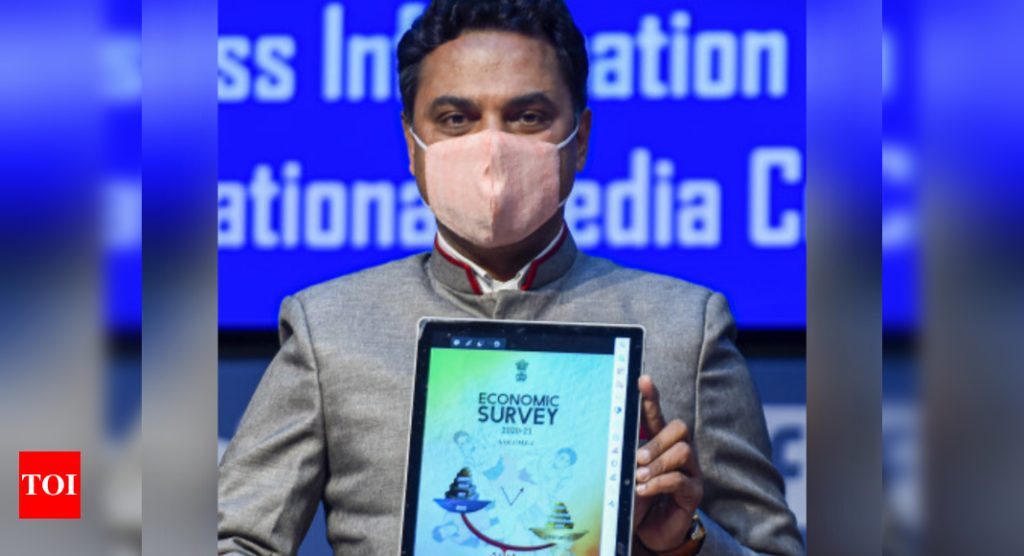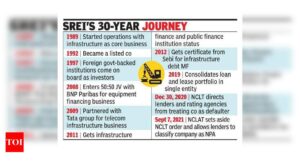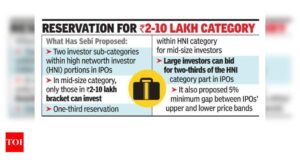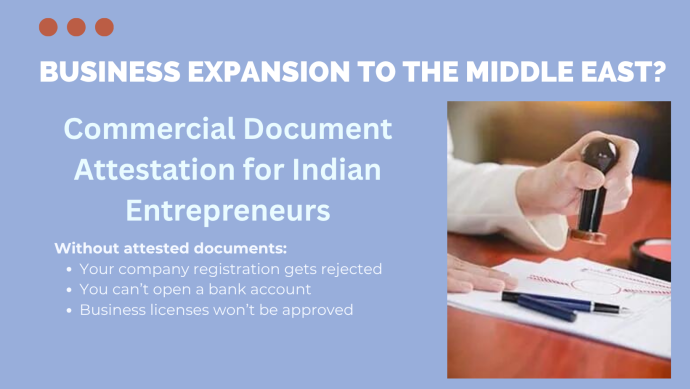Economic survey: V-shaped recovery, saving lives during Covid: Major findings of Economic Survey 2021 – Times of India

[ad_1]
Presenting the survey, chief economic adviser (CEA) Krishnamurthy Subramanian said that India’s policy response to Covid was guided by realisation that GDP growth will come back, but not human lives.
He added that early and intense lockdowns saved many lives and helped in faster recovery of economy.
Here are the major findings of the survey:
V-shaped economic recovery
The Economic Survey predicted a V-shaped economic recovery for the next fiscal year. It said that the economy would take two years to regain pre-pandemic levels.
It further projected Indian economy to grow by 11 per cent for the coming fiscal year, on the back of a massive Covid-19 vaccination drive and rebound in consumer demand and investments.
The rollout of vaccines against Covid-19, which has killed 153,847 people in the country so far, will re-energise Asia’s third-largest economy next year, putting it on track to post the strongest growth since India liberalised its economy in 1991, the survey noted.
However, it added that the gross domestic product (GDP) is projected to contract by a record 7.7 per cent in the current fiscal ending March 31, 2021.
India showed great resilience in fighting Covid
India’s pandemic response, focused on saving lives and livelihoods, restricted the Covid-19 spread by 37 lakh cases and saved more than 1 lakh lives, the Economic Survey said.
In the absence of a potent cure, preventive vaccine; interplay of network structures in densely populated areas, and a high case fatality rate (CFR), India weighed the costs and opportunities strategically.
The government adopted a unique four-pillar strategy of containment, fiscal, financial, and long-term structural reforms. Calibrated fiscal and monetary support was provided given the evolving economic situation, cushioning the vulnerable in the lockdown and boosting consumption and investment while unlocking, mindful of fiscal repercussions and entailing debt sustainability.
The survey noted that a favorable monetary policy ensured abundant liquidity and immediate relief to debtors via temporary moratoria, while unclogging monetary policy transmission.
As India’s mobility and pandemic trends aligned and improved concomitantly, indicators like E-way bills, rail freight, GST collections and power consumption not only reached pre-pandemic levels but also surpassed previous year levels.
CEA KV Subramanian while presenting the Economic Survey
Infrastructure ‘quintessential’ to boost growth
Terming investment in infrastructure “quintessential” to boost growth, the Economic Survey said post unlocking of the economy, infrastructure sectors are poised for growth and construction of roads is expected to return to the high pace attained before Covid-19.
The infrastructure sector will be the key to overall economic growth and macroeconomic stability, the Survey said emphasising that the year after the crisis (2021-22) will require sustained and calibrated measures to facilitate the process of economic recovery and enable the economy to get back on its long-term growth trajectory.
Asserting that Rs 111 lakh crore National Infrastructure Pipeline for 2020-2025 will be a game-changer for the Indian economy, the Survey said sectors like energy, roads, urban infrastructure, railways have a lion’s share in it that will help boost growth.
Credit ratings do not reflect fundamentals
The Survey noted that India’s sovereign credit ratings do not reflect its fundamentals.
Never in the history of sovereign credit ratings has the world’s fifth largest economy been rated as the lowest rung of investment grade (BBB-/Baa3), it said.
“India’s willingness to pay is unquestionably demonstrated through its zero sovereign default history. The country’s ability to pay can be gauged by low foreign currency denominated debt and forex reserves,” it said.
Agriculture sector is the only silver lining
Lauding the farm sector for demonstrating resilience during the pandemic, the Economic Survey suggested the government to see farm sector as a “modern business enterprise” for which “urgent reforms” are required to enable sustainable and consistent growth.
The agriculture and allied activities were the sole bright spot amid the slide in GDP performance of other sectors, clocking a growth rate of 3.4 per cent at constant prices during 2020-21, it added.
According to the Survey, the farm sector has got “renewed thrust” due to various measures on credit, market reforms and food processing under the Aatmanirbhar Bharat announcements.
Stating that the progress in agriculture (including forestry and fisheries) has a bearing on the fate of the largest low-income group in India, the Survey said: “There is a need for a paradigm shift in how we view agriculture from a rural livelihood sector to a modern business enterprise.”
New farm laws herald a new era of market freedom
Highlighting the benefits of the new farm laws, the survey said farmers in India have suffered from various restrictions in marketing their produce.
The government said that they herald a new era of market freedom which can go a long way in improving lives of small and marginal farmers in India.
The pre-budget document defended the farm laws in the backdrop of long-running farmers’ agitation at various borders of the national capital seeking repeal of these legislations expressing concern that they are pro-corporate and could weaken government regulated mandis, also called Agriculture Produce Marketing Committees (APMCs).
“Several Economic Surveys have expressed concern at functioning of the APMCs and the fact that they sponsor monopolies. Specifically, Economic Surveys for the years 2011-12, 2012-13, 2013-14, 2014-15, 2016-17, 2019-20 focused on the reforms required in this context,” the survey said.
Increase in public health spending
As per the Economic Survey, an increase in government spending on the healthcare sector — from the current 1 per cent to 2.5-3 per cent of GDP – as envisaged in the National Health Policy 2017 could reduce out-of-pocket expenditures.
The rise in public spending can lead to a reduction in expenditures from 65 per cent to 30 per cent of overall healthcare spend, it noted.
It further said that for the country to effectively respond to future pandemics, the country’s health infrastructure needs to be agile.
Emphasising on the steps to make the system agile towards pandemics, the Economic Survey noted that every hospital may be equipped so that at least one ward in the hospital can be quickly modified to respond to a national health emergency while caring for the normal diseases in usual times.
Hike in PDS rates
Stating that the food subsidy bill is becoming “unmanageably large”, the Economic Survey suggested the government to increase the selling price of foodgrains provided through ration shops to over 80 crore beneficiaries.
“While it is difficult to reduce the economic cost of food management in view of rising commitment towards food security, there is a need to consider the revision of central issue price (CIP) to reduce the bulging food subsidy bill,” the survey said.
Foodgrains via ration shops are supplied at highly subsidised rates of Rs 3 per kg for rice, Rs 2 per kg for wheat and Rs 1 per kg for coarse grains through Public Distribution System (PDS) as per the National Food Security Act (NFSA).
In Budget 2020, the government had allocated Rs 1,15,569.68 crore for supplying subsidised foodgrain through PDS and welfare schemes.
Economic growth will alleviate poverty
In order to lift the poor out of poverty, India must continue to focus on economic growth, stated the Economic Survey.
It examined the correlation of inequality and per-capita income with a range of socioeconomic indicators, including health, education, life expectancy, infant mortality, birth and death rates, fertility rates, crime, drug usage and mental health.
Based on this, the survey concluded that both economic growth and inequality have similar relationships with socio-economic indicators.
It further said for a developing country like India, where there is significant scope for poverty reduction and growth potential is high, expansion of the overall pie is preferable as redistribution is only feasible if the size of the economic pie grows rapidly.
Reduced data cost could enable affordable access
The survey noted that internet and broadband penetration across both urban and rural areas progressed rapidly, and the reduced cost of data could enable the affordable access at a fast pace.
Acknowledging the key role played by the telecom sector in implementation of JAM-trinity (Jandhan Aadhaar Mobile) based social sector schemes and other pro-development initiatives of the government, the Economic Survey said efforts are being made to address the digital divide by extending inclusive internet access to every Indian citizen.
The Economic Survey took note of the “exponential” growth in wireless data usage, saying the average monthly wireless data consumption per subscriber had risen to 12.2 GB in June 2020 from 9.1 GB in March 2019.
E-education can reduce inequalities
Online schooling, which has taken off in a big way during the Covid-19 pandemic, can help reduce inequalities in educational outcomes if it is well-utilised, the pre-budget Economic Survey said.
Quoting the Annual Status of Education Report (ASER) 2020 Wave-1 (Rural), the Survey pointed out that the percentage of enrolled children from government and private schools owning a smartphone increased from 36.5 per cent in 2018 to 61.8 per cent in 2020 in rural India.
“…if utilised well, the resultant reduction in the digital divide between rural and urban, gender, age and income groups is likely to reduce inequalities in educational outcomes,” it added.
(With inputs from agencies)
Watch Economic Survey 2021: Early intense lockdown saved lives, helped faster recovery, says CEA
[ad_2]
Source link







